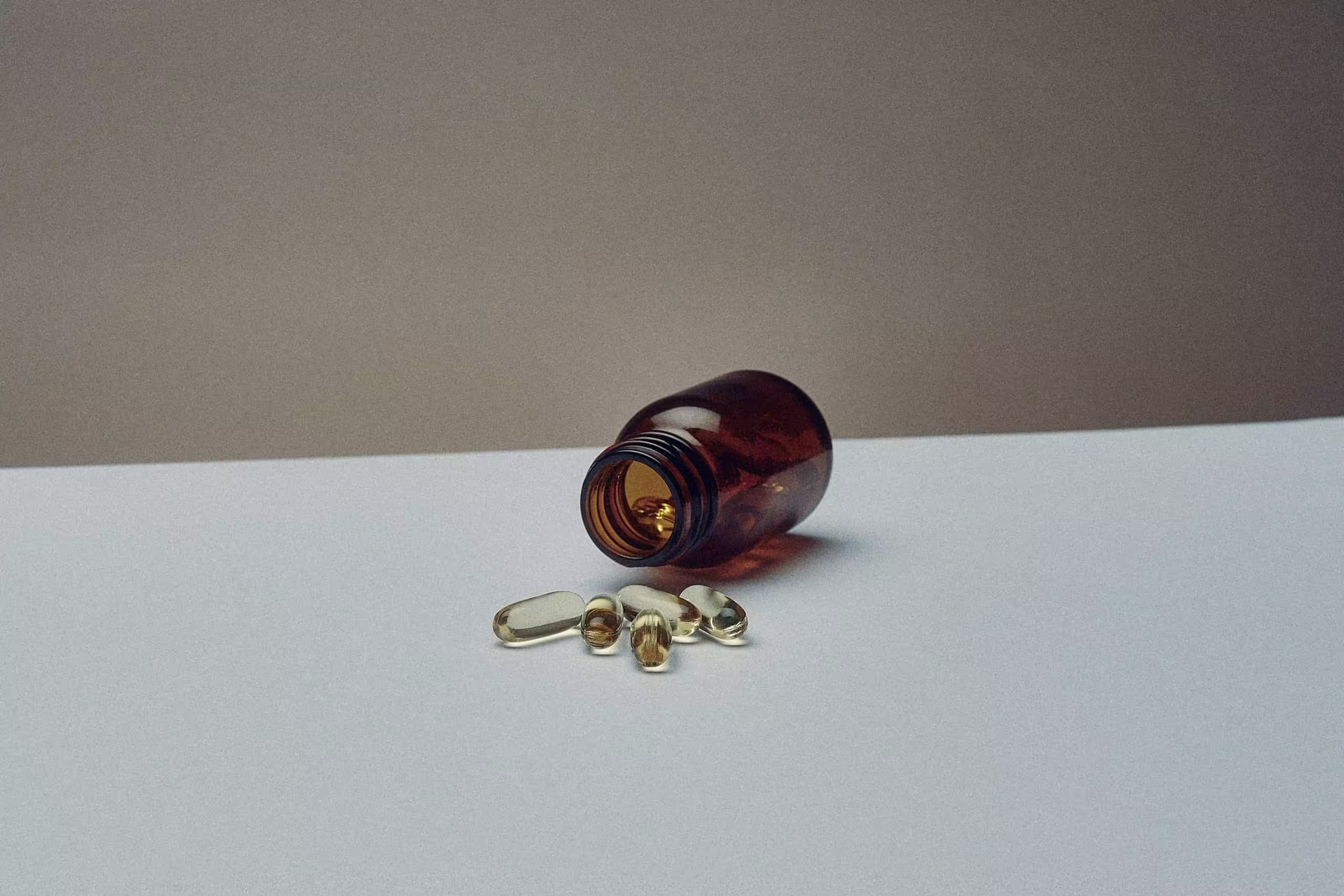

Understanding Antibiotics and Yeast Infections
Learn how antibiotics can cause yeast infections, which types are most risky, and prevention strategies to stay healthy.
Words by Olivia Cassano
Scientifically edited by Dana Alloy
Medically reviewed by Dr. Christine Vo, MD
If you’ve ever had a yeast infection after taking antibiotics, you’ll know firsthand that the last thing you need after getting rid of one infection is for another one to show up soon after.
Taking antibiotics is one of the most frequent — and predictable — triggers for vaginal candidiasis (AKA a yeast infection), a super common type of fungal infection. Nevertheless, researchers haven’t figured out why that happens, nor how to prevent it. Yet another thing we can blame on the gender health gap.
Antibiotics are a type of medication prescribed to treat many common bacterial infections, from urinary tract infections (UTIs) to bacterial vaginosis (BV), so why are they putting people with vaginas at risk of yeast infections?
Let’s look at the available research (spoiler alert: there isn’t much) and explore how antibiotics can lead to yeast infections, what kind of antibiotic treatment carries the highest risks, and what you can do about it.
Can you get a yeast infection from antibiotics?
Sadly, yes, antibiotics can increase your risk of developing a vaginal yeast infection.
The risk of getting a yeast infection after taking antibiotics is between 10-30%. All antibiotics can cause vaginal yeast infections, but there are a few factors that can determine your likelihood of getting a yeast infection after a course of antibiotic treatment.
Having Candida already present in your vaginal microbiome can put you at an increased risk (33%) of developing a yeast infection after antibiotic treatment. Some research shows that having bacterial vaginosis can increase your risk of developing a yeast infection after antibiotic treatment, as well.
Other risk factors that influence the chances of post-antibiotic vaginal yeast infections include:
- Whether or not you’ve had antibiotic-induced yeast infections in the past
- Having a susceptibility to vaginal yeast infections (such as having uncontrolled diabetes or a weakened immune system)
- Existing vulvar diseases, like lichen sclerosus
- Douching
- The type of antibiotic (broad-spectrum antibiotics carry the highest risk)
- Taking hormonal birth control (such as birth control pills), estrogen therapy, or steroids.

Which antibiotics are most likely to cause yeast infections?
Broad-spectrum antibiotics (that kill a wide range of bacteria) are more likely to increase the risk of developing a yeast infection. Common antibiotics that can cause vaginal yeast infections include:
- Penicillin: amoxicillin
- Macrolides: azithromycin and clarithromycin
- Cephalosporin antibiotics such as cephalexin and cefuroxime
- Fluoroquinolones: levofloxacin or ciprofloxacin.
Moreover, vaginal application of antibiotics seems to carry the highest risk of vaginal yeast infections, especially with clindamycin and metronidazole, which are often prescribed to treat BV.
Interestingly, tetracyclines (such as doxycycline) prescribed for long-term acne are also identified as a specific risk factor for Candida overgrowth. Apparently, wanting clear skin and no yeast infections is too much to ask.
How do antibiotics disrupt the vaginal microbiome?
Vaginal infections happen when something upsets the natural balance in your vaginal microbiome, allowing pathogens to colonize and cause dysbiosis. This then leads to symptoms, like itching and unusual discharge.
The main theory explaining why antibiotics trigger vaginal yeast infections is that antibiotics kill healthy bacteria like Lactobacilli as well as the bad, leaving your vaginal microbiome more vulnerable to Candida overgrowth, the cause of vaginal yeast infections.
However, no study has proven this theory. A 2019 review on the link between antibiotics and vaginal yeast infections concluded that vulvovaginal candidiasis isn’t more common in women with lower levels of good bacteria in their vaginal microbiome, nor that women with recurrent yeast infections have Lactobacilli-deficient microbiomes.
The review suggests that rather than affecting Lactobacilli, antibiotics may impact the vaginal microbiome by triggering the release of heat shock proteins and hindering the release of cytokines (protective chemicals), allowing Candida fungi to colonize. More research is needed to confirm this theory, though.
Can you prevent vaginal yeast infections caused by antibiotics?
There aren’t any official guidelines for preventing vaginal yeast infections caused by antibiotics.
Your doctor may suggest that you start treatment for yeast infection — usually an oral antifungal, like fluconazole — along with your antibiotic treatment — either if you start to experience symptoms, or prophylactically if you have a history of vaginal yeast infections. If you start experiencing symptoms of a yeast infection while on antibiotics, check with your doctor before trying an OTC antifungal because some antibiotics can react with other medications.
Similarly, some doctors believe that lactobacilli probiotic supplements — taken either orally or vaginally — can prevent vaginal yeast infections by replenishing the vaginal microbiome after a course of antibiotics. Unfortunately, there is minimal data to support this theory (but wouldn’t it be neat if it did?).
If you’ve been prescribed antibiotics by your doctor, you must complete the full course. Yes, the looming threat of a yeast infection is a bummer, but stopping antibiotics means the infection you were treating could return. At the end of the day, having one infection is better than having two.
Common symptoms of a yeast infection
Being on antibiotics doesn’t mean you’re guaranteed to develop a yeast infection. Out of an abundance of caution, it’s helpful to look out for any yeast infection symptoms, including:
- Vulvar and vaginal itching, redness, or soreness
- White vaginal discharge that is curd-like in consistency and does not often smell
- A burning feeling when you pee or have sex.
FAQs
How can I prevent a yeast infection while taking antibiotics?
The benefits of antibiotics are way more significant than the risk of side effects. Although antibiotics can put you at risk of a yeast infection, not taking them can make a bacterial infection harder to treat. Unfortunately, there aren't any official guidelines for preventing vaginal yeast infections caused by antibiotics. Your healthcare provider might suggest starting treatment for a yeast infection, usually with an oral antifungal like fluconazole, alongside your antibiotic treatment. Some doctors believe that taking Lactobacilli probiotic supplements, either orally or vaginally, can prevent vaginal yeast infections by replenishing the vaginal microbiome after a course of antibiotics, but there's not a lot of data to support this. If you notice symptoms of a yeast infection while on antibiotics, it's best to check with your doctor before trying an over-the-counter antifungal, as some antibiotics can interact with other medications.
How do you get rid of a yeast infection from antibiotics?
Most vaginal yeast infections clear up with antifungal treatments, which you can get either over-the-counter or through your doctor, like creams, suppositories, or oral medications such as fluconazole. These options can help in tackling Candida overgrowth. In the meantime, keeping up with good hygiene and steering clear of irritants like scented soaps or douches can make a big difference. If your symptoms stick around or seem to get worse, it’s a great idea to chat with your healthcare provider for some personalized advice and care.
How long does yeast infection last after antibiotics?
A yeast infection caused by antibiotics can last anywhere from a few days to a couple of weeks, depending on how quickly you start treatment and how your body responds. If you treat it promptly with an over-the-counter antifungal medication, the infection usually begins to improve within a few days and should clear up completely within a week. However, if left untreated, the infection can last longer. If symptoms continue for more than a week after starting treatment or if they worsen, it's a good idea to consult a healthcare provider for further evaluation and possible alternative treatments.
Can antibiotics cause vaginal discharge?
Yes, sometimes antibiotics can cause changes in vaginal discharge. This happens because antibiotics, while effective at killing harmful bacteria, can also disrupt the balance of normal, healthy bacteria in the vaginal microbiome. When the balance is disrupted, it can lead to an overgrowth of yeast, specifically Candida, resulting in a yeast infection. One of the most common symptoms of a yeast infection is a change in vaginal discharge — typically thick, white, and "cottage cheese-like." If you notice unusual discharge after starting antibiotics, it might be a sign of a developing yeast infection, and you may need an antifungal treatment to address it.
Can a yeast infection go away on its own?
If you have a mild yeast infection, there's a small chance it might clear up as your body's natural balance of bacteria and yeast gets back on track. However, this isn't always the case, and symptoms like itching, burning, and discharge can stick around or even get worse if they're not addressed. For more severe or recurring infections, it's best to seek medical help, since they usually won't go away on their own. Over-the-counter or prescription antifungal treatments can help speed up the healing process. If you think you might have a yeast infection and you don’t notice any improvement in a few days — or if things start to feel worse — it's a good idea to reach out to a healthcare provider.
How can I naturally flush out a yeast infection?
There are no proven ways to “flush out” a yeast infection naturally. Most home remedies floating around online are largely ineffective and can cause more harm than good. The only proven way to treat vaginal yeast infections is by taking over-the-counter or prescription antifungal medication like fluconazole, terconazole, or miconazole.

Recurrent symptoms? Get Evvy's at-home vaginal microbiome test, designed by leading OB-GYNs.





